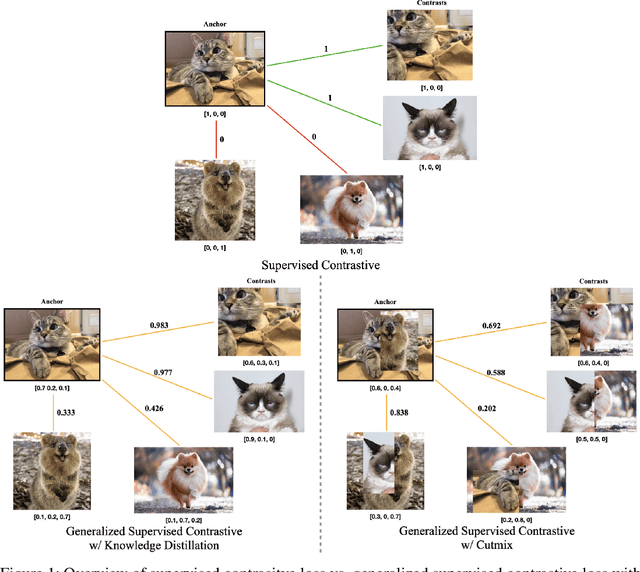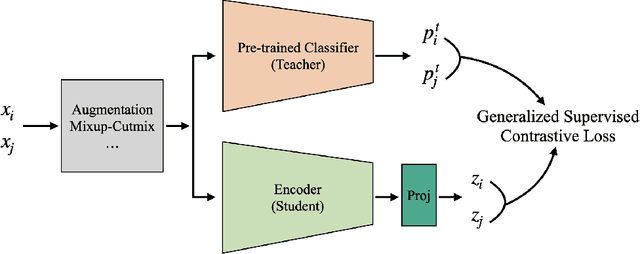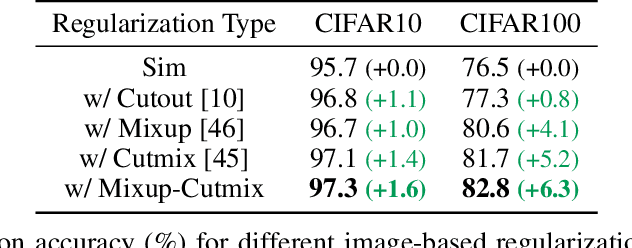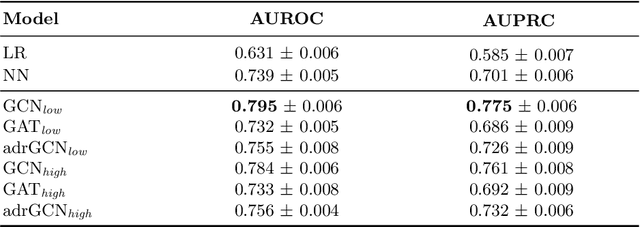Jooyoung Chang
D-Score: A Synapse-Inspired Approach for Filter Pruning
Aug 08, 2023Abstract:This paper introduces a new aspect for determining the rank of the unimportant filters for filter pruning on convolutional neural networks (CNNs). In the human synaptic system, there are two important channels known as excitatory and inhibitory neurotransmitters that transmit a signal from a neuron to a cell. Adopting the neuroscientific perspective, we propose a synapse-inspired filter pruning method, namely Dynamic Score (D-Score). D-Score analyzes the independent importance of positive and negative weights in the filters and ranks the independent importance by assigning scores. Filters having low overall scores, and thus low impact on the accuracy of neural networks are pruned. The experimental results on CIFAR-10 and ImageNet datasets demonstrate the effectiveness of our proposed method by reducing notable amounts of FLOPs and Params without significant Acc. Drop.
A Generalized Supervised Contrastive Learning Framework
Jun 01, 2022



Abstract:Based on recent remarkable achievements of contrastive learning in self-supervised representation learning, supervised contrastive learning (SupCon) has successfully extended the batch contrastive approaches to the supervised context and outperformed cross-entropy on various datasets on ResNet. In this work, we present GenSCL: a generalized supervised contrastive learning framework that seamlessly adapts modern image-based regularizations (such as Mixup-Cutmix) and knowledge distillation (KD) to SupCon by our generalized supervised contrastive loss. Generalized supervised contrastive loss is a further extension of supervised contrastive loss measuring cross-entropy between the similarity of labels and that of latent features. Then a model can learn to what extent contrastives should be pulled closer to an anchor in the latent space. By explicitly and fully leveraging label information, GenSCL breaks the boundary between conventional positives and negatives, and any kind of pre-trained teacher classifier can be utilized. ResNet-50 trained in GenSCL with Mixup-Cutmix and KD achieves state-of-the-art accuracies of 97.6% and 84.7% on CIFAR10 and CIFAR100 without external data, which significantly improves the results reported in the original SupCon (1.6% and 8.2%, respectively). Pytorch implementation is available at https://t.ly/yuUO.
Drug-disease Graph: Predicting Adverse Drug Reaction Signals via Graph Neural Network with Clinical Data
Apr 01, 2020



Abstract:Adverse Drug Reaction (ADR) is a significant public health concern world-wide. Numerous graph-based methods have been applied to biomedical graphs for predicting ADRs in pre-marketing phases. ADR detection in post-market surveillance is no less important than pre-marketing assessment, and ADR detection with large-scale clinical data have attracted much attention in recent years. However, there are not many studies considering graph structures from clinical data for detecting an ADR signal, which is a pair of a prescription and a diagnosis that might be a potential ADR. In this study, we develop a novel graph-based framework for ADR signal detection using healthcare claims data. We construct a Drug-disease graph with nodes representing the medical codes. The edges are given as the relationships between two codes, computed using the data. We apply Graph Neural Network to predict ADR signals, using labels from the Side Effect Resource database. The model shows improved AUROC and AUPRC performance of 0.795 and 0.775, compared to other algorithms, showing that it successfully learns node representations expressive of those relationships. Furthermore, our model predicts ADR pairs that do not exist in the established ADR database, showing its capability to supplement the ADR database.
 Add to Chrome
Add to Chrome Add to Firefox
Add to Firefox Add to Edge
Add to Edge